SISCO handheld PON optical power meter is used to measure the optical power of both upstream and downstream light signals in PON (Passive Optical Network) networks. It can measure multiple wavelengths such as 1310/1490/1550nm, and power measurement range of 1310/1490: -40~+10dBm; 1550: -70~+10dBm.
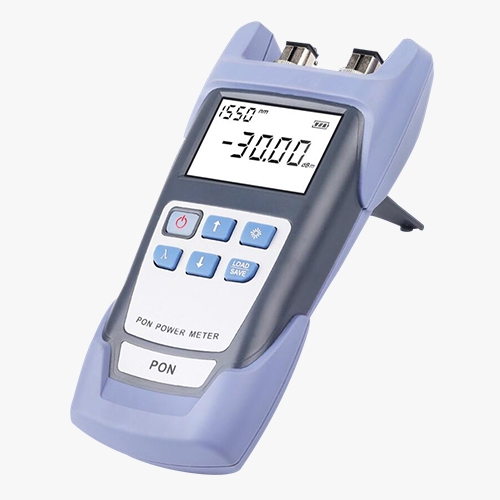
Enhanced Visibility and Multi-Wavelength Testing
- LCD Backlight for Better Visibility: Equipped with an LCD backlight, the opm offers clear visibility in various lighting conditions, making it easier to read measurements and navigate the interface.
- Simultaneous Testing of 3 Wavelengths: It can simultaneously test three different wavelengths of 1310/1490/1550nm, providing comprehensive analysis and ensuring optimal network performance across multiple channels.
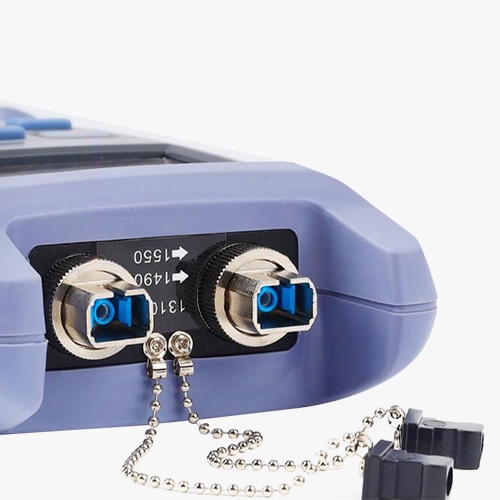
Versatile Bi-Directional Testing with Port Compatibility
- Bi-Directional Port Online Measurement: Features bi-directional port online measurement capabilities, allowing for accurate and efficient data transmission testing in both directions.
- Compatible with both SC and FC Ports: The PON opm is designed to be versatile, supporting both SC and FC ports, which allows for greater compatibility with different network setups.
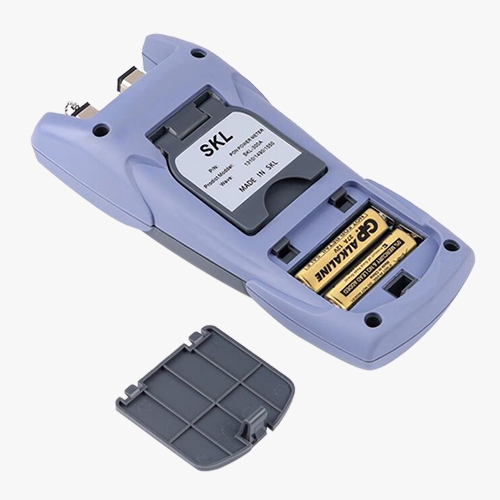
Switchable Interfaces, Battery-Powered Portability
- Equipped with Interchangeable Interfaces: Making it simple to switch between different connector types.
- Powered by 2 AA Batteries: Providing a reliable and portable power source that ensures the device remains operational in various environments without the need for external power supplies.
Applications
Fiber optical power meter can be widely used in optical cable construction and maintenance, optical fiber communication, optical fiber sensing, CATV and other fields. It is mainly used for the measurement of continuous optical signal power, optical fiber line loss test, optical device insertion loss test, optical fiber breakpoint location, end-to-end optical fiber identification, etc.

Optical Fiber Communicate
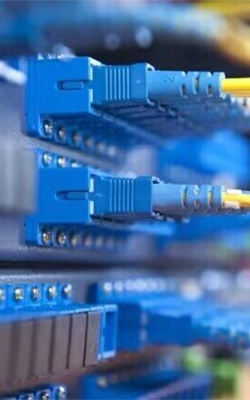
Optical Fiber Sensing
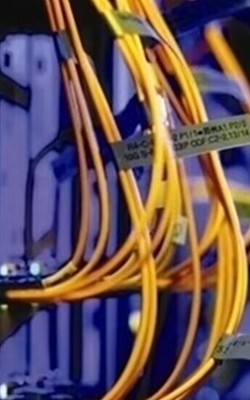
CATV
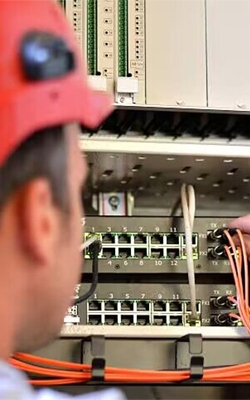
Optical Cable Const.&Maint.
| Model | SISCO-PQA-300U |
| Power Measurement Range | 1310/1490: -40~+10dBm; 1550: -70~+10dBm |
| Probe Type | InGaAs |
| Working Wavelength | 1310/1490/1550nm |
| Loss Accuracy | 0.5dB/loss<1.5 |
| Display Resolution | Linear display: 0.1; Logarithmic display: 0.01dBm |
| Optical Power Meter Interface | FC/SC |
| Continuous Working Time | >60h (LCD backlight off) |
| Working Temperature(℃) | -10~+50℃ |
| Storage Temperature (°C) | -20~+70℃ |
| Power Supply | 2 AA batteries |
| Size | 183*83*28mm |
| Weight | 204g (without battery) |
| Note: The device has no charging function, non-rechargeable batteries can be used with the power adapter at the same time. | |
Dimension (mm)
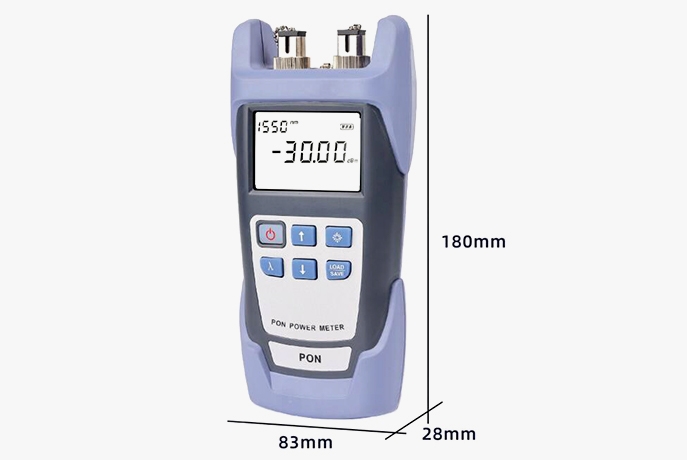
Details
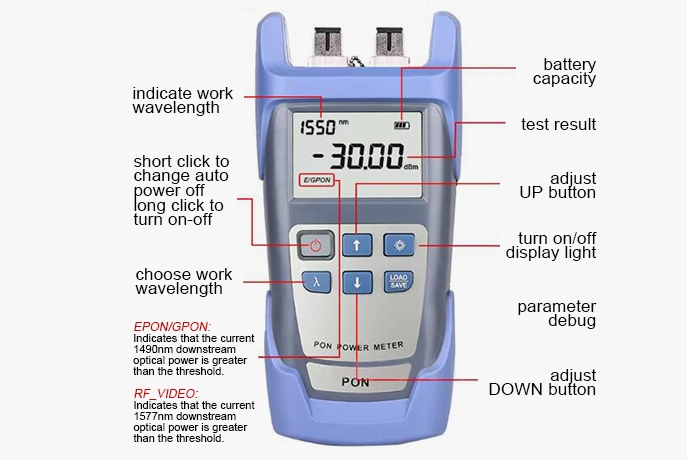
Packing List
- 1 x Pon optical power meter
- 1 x FC interface
- 1 x Warranty card
- 1 x Certificate
- 1 x User manual
- 1 x Packing box
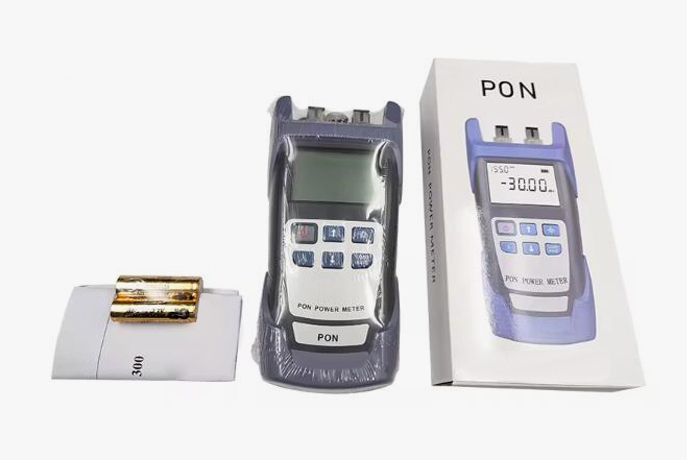
Q1: What is PON in optical communication?
A1: PON, or Passive Optical Network, is a fiber-optic telecommunications technology used in optical communication to provide high-speed internet, voice, and video services to multiple users. It operates by transmitting data from a central hub, known as the Optical Line Terminal (OLT), through a single optical fiber that is passively split to serve multiple endpoints, such as Optical Network Units (ONUs) or Optical Network Terminals (ONTs). PON systems are efficient because they share the same fiber among many users without requiring active electronic components in the distribution network, making it cost-effective and scalable for delivering broadband services.
Q2: Why is wavelength selection important in a fiber optic power meter?
A2: Wavelength selection is crucial in a fiber opm because different optical signals are transmitted at specific wavelengths, depending on the type of fiber and the application. Accurate measurement of the optical signal's power requires the power meter to be tuned to the correct wavelength, as signal strength can vary significantly across different wavelengths. Incorrect wavelength selection can lead to inaccurate measurements, potentially compromising the performance of the network. Therefore, having a power meter that supports a range of wavelengths ensures versatility and precision in various testing and troubleshooting scenarios within fiber optic systems.
Q3: What wavelengths do fiber optic power meter typically measure?
A3: Fiber optic power meter typically measure a range of wavelengths commonly used in fiber optic communications. The most standard wavelengths include 850nm, 980nm, 1300nm, 1310nm, 1490nm, 1550nm, 1625nm, and 1650nm. These wavelengths cover the primary bands used for data transmission in various types of optical fibers, including multimode and single-mode fibers, ensuring that the power meter can accurately measure the signal strength across different fiber optic networks.
Tips: How does a fiber optic power meter work?
A fiber optic power meter works by measuring the optical power of light transmitted through a fiber optic cable. The device uses a photodetector to capture the light signal, which then converts the optical energy into an electrical signal. This electrical signal is proportional to the power of the light entering the meter. The power meter processes this electrical signal and displays the optical power level, typically in units such as decibels-milliwatts (dBm), decibels (dB), or milliwatts (mW). The user selects the appropriate wavelength on the meter to match the wavelength of the light being measured, ensuring accurate readings. This process allows technicians to verify signal strength, troubleshoot issues, and ensure the fiber optic network is functioning correctly.
Thank you for buying industrial test and measurement equipment on SISCO.com, all products sold by SISCO and the partner cover a 12 months warranty, effective from the date of receiving the products.
What is covered?
SISCO is responsible for providing free spare parts, and free technical support to assist the customer to repair the defective products until the problem is solved.
What is not covered?
- Product purchased from anyone other than a SISCO store or a SISCO authorized reseller.
- Expendable parts.
- Routine cleaning or normal cosmetic and mechanical wear.
- Damage from misuse, abuse or neglect.
- Damage from use of parts other than SISCO approved.
- Damage from use outside the product’s usage or storage parameters.
- Damage from use of parts not sold by SISCO.
- Damage from modification or incorporation into other products.
- Damage from repair or replacement of warranted parts by a service provider other than a SISCO authorized service provider.
- Damage caused by the application environment not meeting the product usage requirements and the failure to perform preventive maintenance.

